By Roger Rittmaster
August 31, 2023
Normally, Nature Now focuses on current natural history in Midcoast Maine. However, for 10 days in late August, my wife (Jeannie Hutchins) and I traveled with three botanist friends to the West Coast of Newfoundland to explore plants that can survive in two harsh environments: the Tablelands of Gros Morne National Park and the limestone barrens of Newfoundland’s Great Northern Peninsula. We were looking for plants that we would not normally see in Maine. This episode of Nature Now is about this trip.
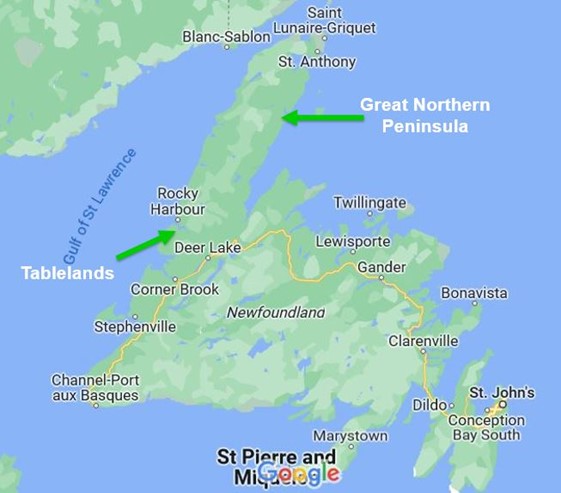
The Tablelands
Our botany trip started in The Tablelands, one of the few places where rocks of the Earth’s mantle are visible on the surface. The mantle is that part of the earth below the crust and above the core. It starts between about 4 to 22 miles below the surface and is about 1,800 miles thick. Normally, when two continental plates collide, the mantle is pushed downward, but in the Tablelands, a piece of the upper mantle was pushed towards the surface about 500 million years ago, when two continental plates collided to form the Appalachian Mountains. Over the next 500 million years erosion wore down the rocks overlying the Tablelands, which only became visible about 15,000 years ago during the last glaciation. The fact that these rocks were only exposed recently is important because the rocks in the mantle wear down quickly, geologically speaking, when exposed to water.
Why are the Tablelands botanically important? The principal rock that makes up the upper mantle is called peridotite, an igneous (magma-derived) rock that is very high in magnesium and iron. Such rocks are termed “mafic”. When peridotite is exposed to water near the Earth’s surface, it is converted to serpentine (= serpentinite) rock. Mafic rocks create soil that is nutrient poor (low in calcium, nitrogen and other nutrients), and its high concentration of magnesium and iron is toxic to most plants. The soil is thin and retains water poorly. The photograph below shows the barren rocky soil that is typical of most of the Tablelands.
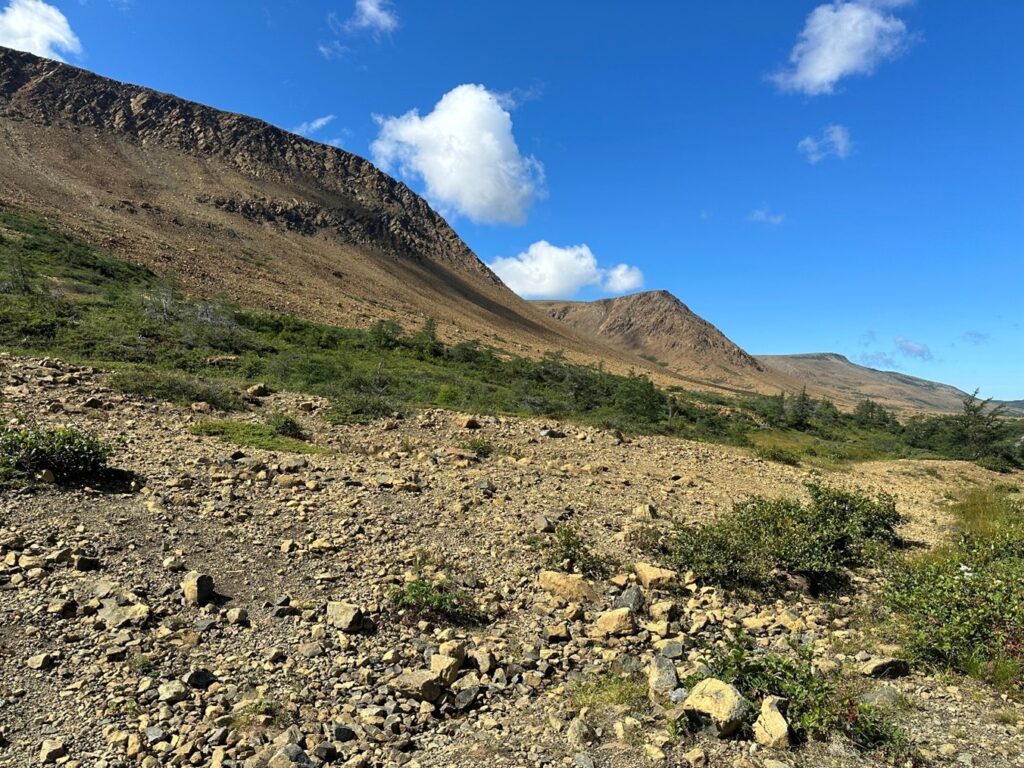
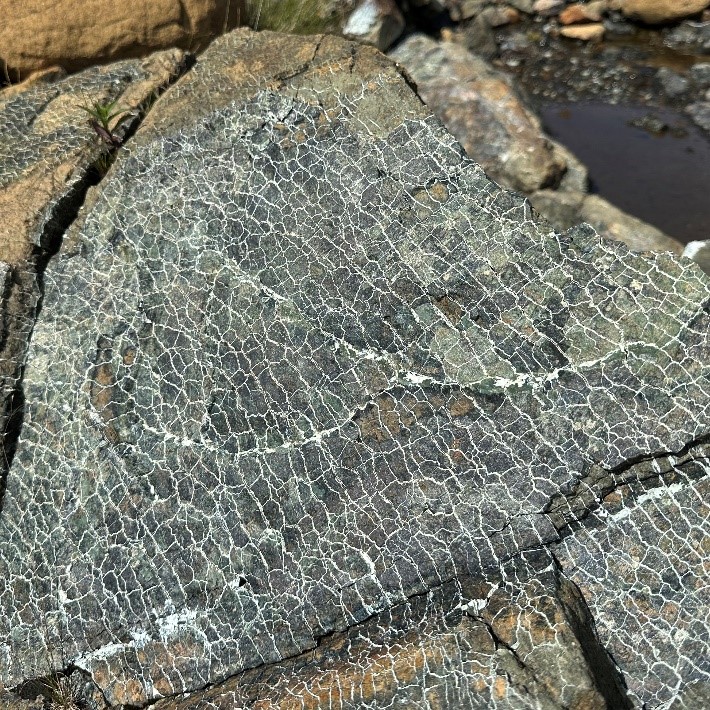
Serpentine rock from the Tablelands. The name comes from the snakeskin like appearance of the rock. Serpentine is derived from olivine, and is often green in color. The rust color of the surrounding rock is from oxidation of the iron within the rock (which is what happens when iron metal rusts).
One of the most surprising plants we found was the Purple Pitcher Plant (Sarracenia purpurea). Whereas pitcher plants typically grow in acidic bogs, here it grew among dry rocks in sparse soil, seemingly totally out of place. However, pitcher plants get their nutrients from insects that are trapped and digested in the fluid inside its tubular leaves. It does not require nutrients from soil and avoids absorbing toxic amounts of magnesium and iron.
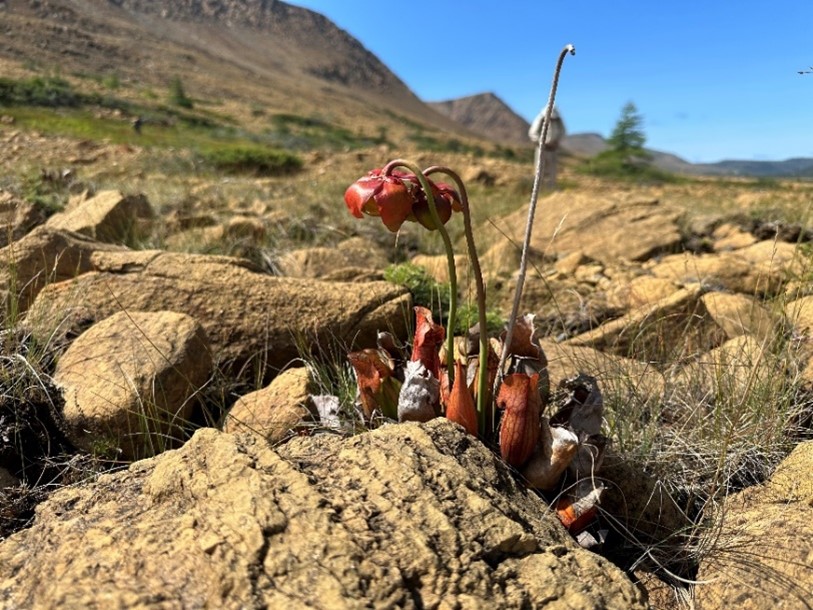
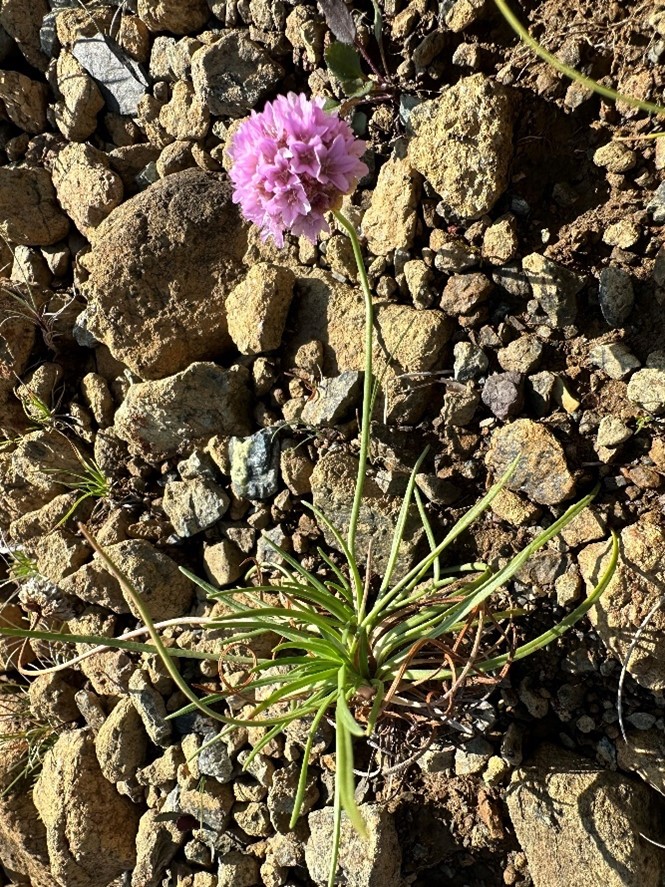
Sea Thrift (Armeria Maritima) is another unusual plant found in serpentine and limestone barrens along the coast of northwest Newfoundland. It has a long taproot, which may help it reach water. The taproot also appears to concentrate toxic metals and ions in its tissue, preventing them from affecting the rest of the plant, and allowing it to survive the harsh chemical conditions of the Tablelands.
If one wants to see similar mafic rocks in Midcoast Maine, they can be found in the 7-acre Pine Hill Preserve on Deer Isle (https://www.islandheritagetrust.org/2018/wp-content/uploads/2020/07/Pine-Hill-2016_09_22-13_11_25-UTC.pdf). Some plants growing here occur nowhere else in Maine.
Limestone Barrens
Most of the Great Northern Peninsula (GNP) of Newfoundland is underlain by limestone. About 500 million years ago this land was at the bottom of a shallow tropical sea just south of the equator. The limestone has its origin in the shells of marine life that lived in that sea. Subsequent northward movement of the tectonic plate on which Newfoundland sits, uplifting of the seafloor, and erosion of overlying rocks, brought the limestone to the surface.
But that’s only part of the story. Repeated glaciation has scoured the surface of these rocks, preventing the build-up of soil. Each winter water that has seeped into cracks in the limestone freezes and expands, breaking apart the rocks. The same process continually moves the gravel that has formed on the surface, damaging the roots of plants that have gained a foothold there. Further stress is caused by ice flows that form offshore which don’t disappear until late Spring, resulting in a growing season as short as 110 days. Finally, limestone itself produces a soil with a high pH that is too basic for many plants to tolerate. In protected areas, the breakdown of plants on top of the limestone creates acidity that modulates the otherwise basic limestone-derived soil. On the coast, however, there is often too little soil, creating a “barren” environment where most plants can’t grow. Those plants that do grow there are often highly specialized; some grow nowhere else. These are the plants that we were looking for.
Bedrock Geology Map of Newfoundland’s Great Northern Peninsula. The location of limestone barrens is shown in red along the western coast.
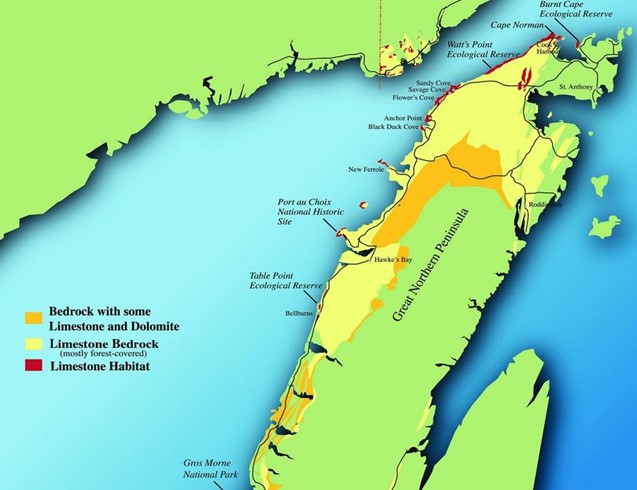
The photograph below shows the southernmost limestone barrens near the town of Bellburns just south of the Table Point Ecological Reserve. Some plants that grow here don’t exist further north, due to the increasingly harsh climate.
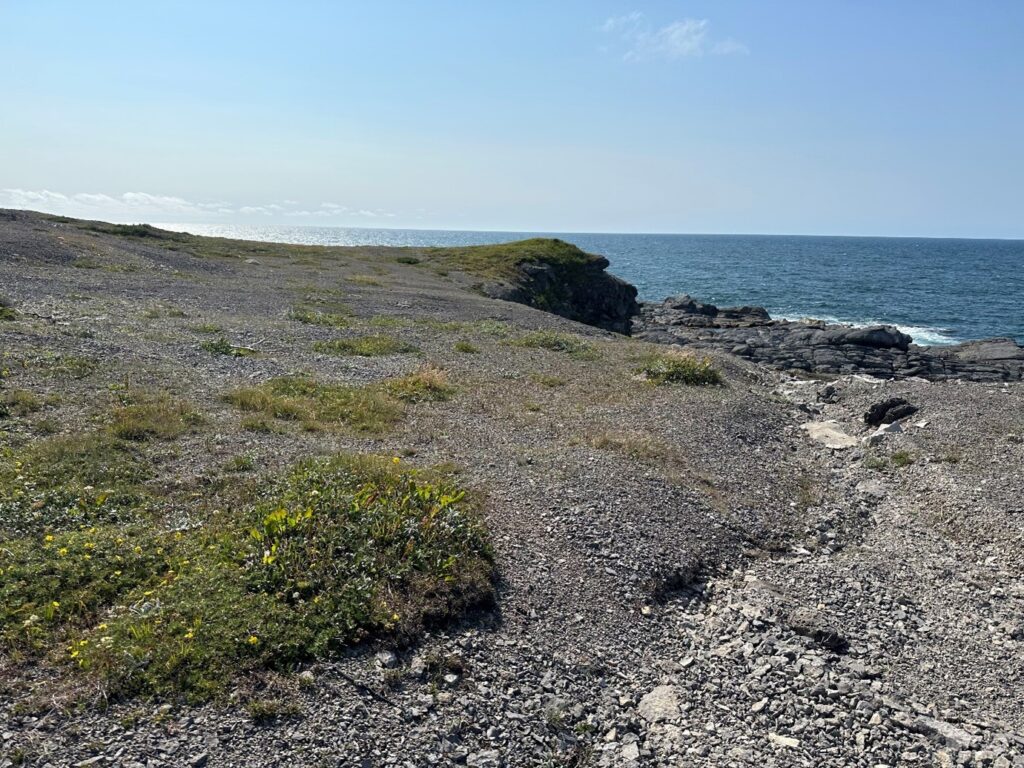
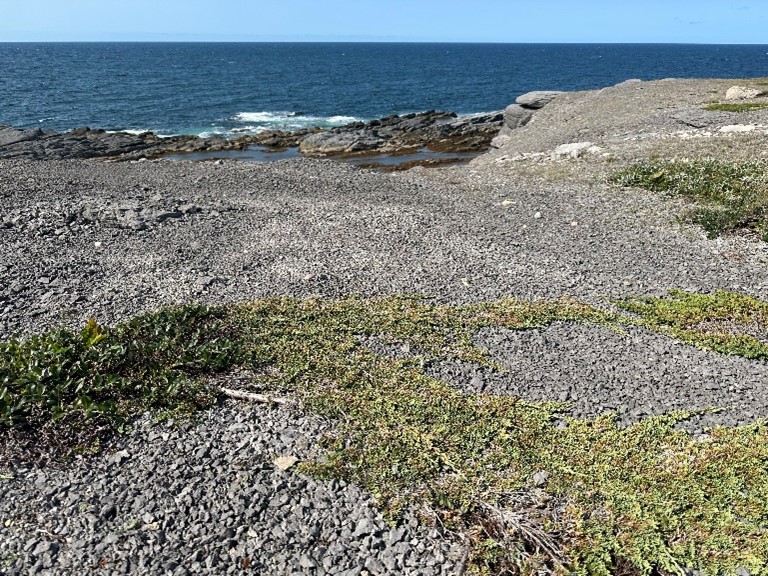
Because of the windy, cold environment, there are no typical trees and few small shrubs on the limestone barrens. The plant in the lower right is Creeping Juniper (Juniperus horizontalis) which is usually less than 4 inches tall, but whose branches can exceed 15 feet in length, snaking along the ground.
Yellow Mountain Saxifrage (Saxifraga aizoides) is an alpine/arctic plant that requires a high pH environment and usually is found in moist environments such as bordering a waterfall. However, its succulent leaves store water and have allowed it to adapt to cracks among the rocks of the limestone barrens in Newfoundland. It spreads by creeping rootstalks (rhizomes) either at or just below the surface. In New England, it is only found in a few places in Vermont among high limestone cliffs.
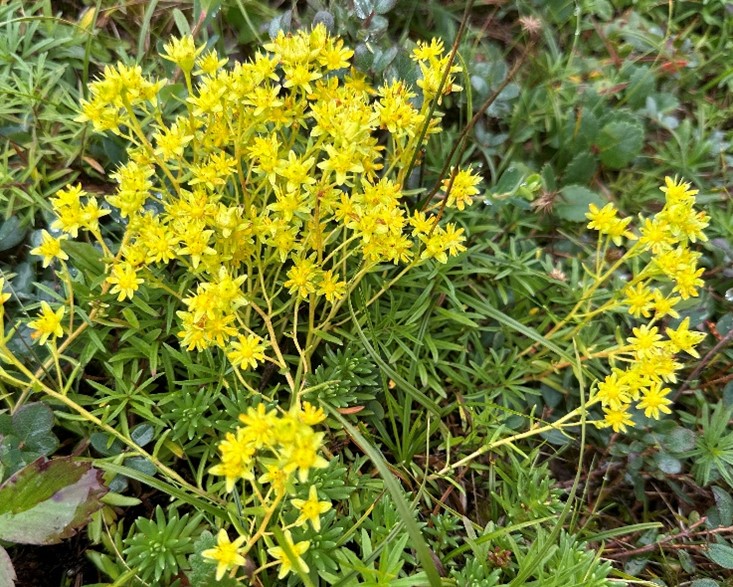
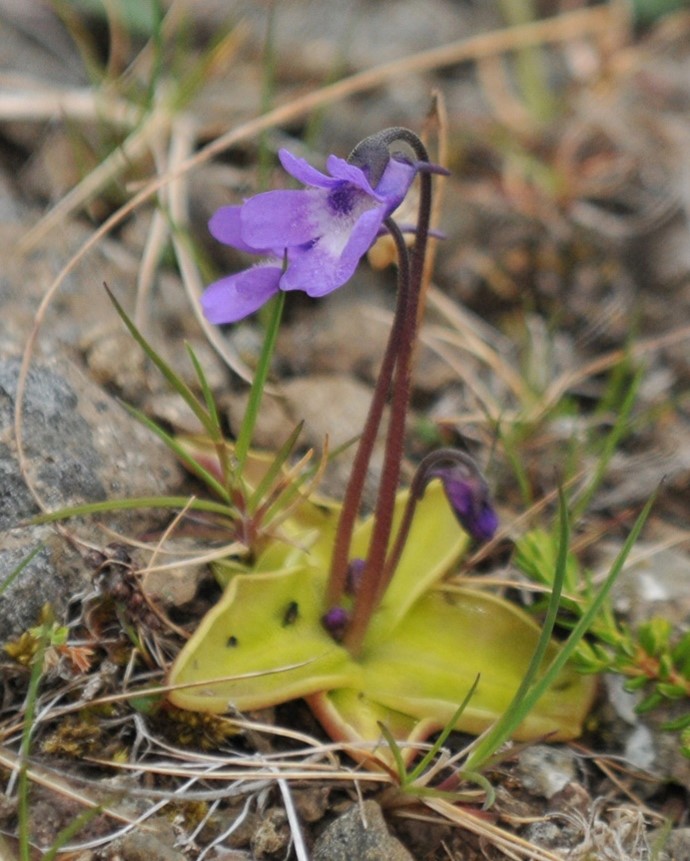
Common Butterwort (Pinguicula vulgaris) is an alpine carnivorous plant that typically grows in moist alkaline environments. In Maine, it has only been found in a single population in a ravine on the western side of Sugarloaf Mountain, but it is common in limestone barrens and outcrops in Newfoundland’s Great Northern Peninsula, where little else can grow. Its leaves excrete a sticky fluid that traps insects and enzymes that digest the insects, thus providing a source of nutrients in an otherwise nutrient-poor environment. Common Butterwort blooms in July (this photograph was taken in Iceland) and what we saw in Newfoundland was the persistent basal leaves scattered among the limestone gravel.
I wish to thank our botanist friends, Bob Capers, Jerry Oemig, and Tom Phillips (left to right), shown here discussing the fine points of a plant on the limestone barrens at Port au Choix…
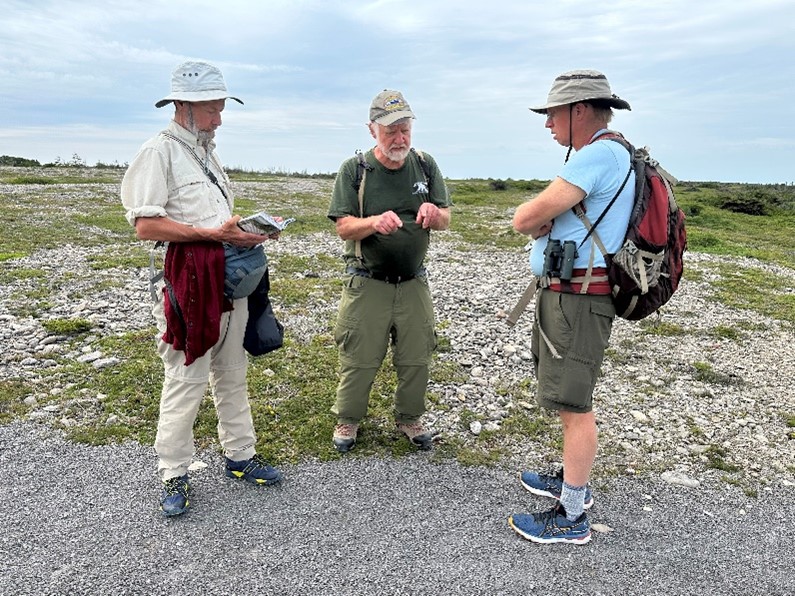
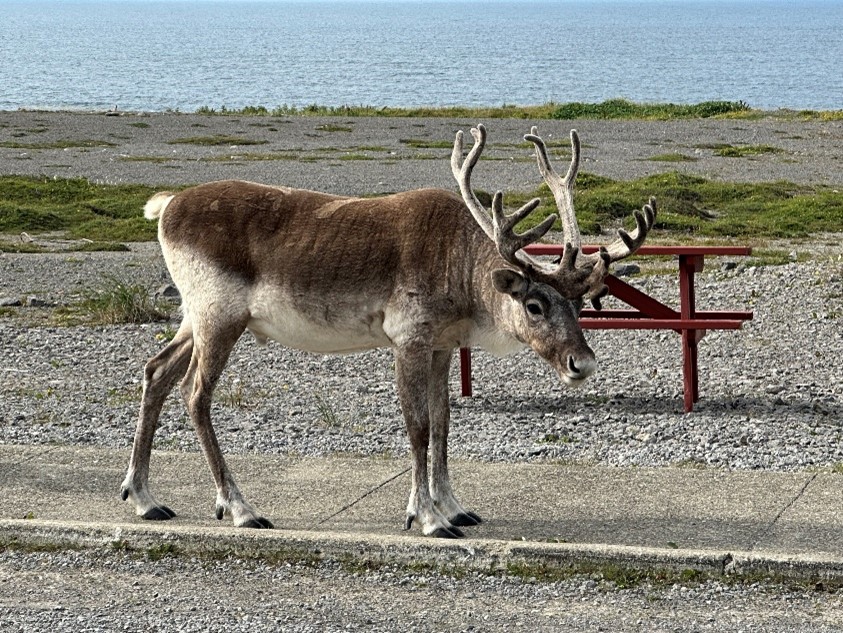
… and the Caribou that demonstrated how comfortable they were among humans in areas where hunting was prohibited.

